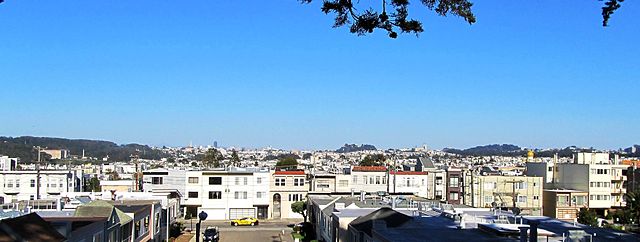Richmond District, San Francisco
The Richmond District is a neighborhood in the northwest corner of San Francisco, California, developed initially in the late 19th century. It is sometimes confused with the city of Richmond, which is 20 miles (32 km) northeast of San Francisco.
San Francisco's Richmond District in foreground, with Golden Gate Bridge, Marin Headlands, and the Presidio in background
First built in 1858 and rebuilt in 1896, the Cliff House in the Outer Richmond went through several incarnations and is now a popular restaurant.
A panorama of the Richmond District as seen from the Lincoln Park golf course, facing east
Aerial view due east of Lands End and Sea Cliff and Richmond districts, outer at lower right, inner at upper left
Golden Gate Park is an urban park between the Richmond and Sunset districts of San Francisco, United States. It is the largest park in the city, containing 1,017 acres (412 ha), and the third-most visited urban park in the United States, with an estimated 24 million visitors annually.
Spreckels Temple of Music and Music Concourse as seen from the de Young Museum in Golden Gate Park
Temporary shelters after the 1906 earthquake.
Kezar Stadium was the home of the San Francisco 49ers for two decades.
Hare Krishna leader Bhaktivedanta Swami in Golden Gate Park, 1967.








